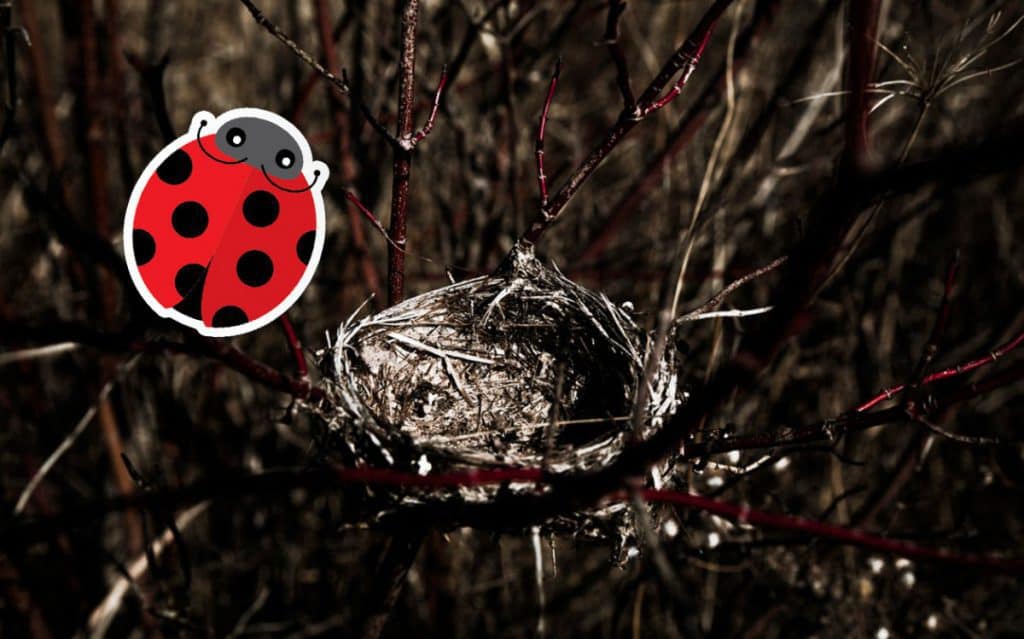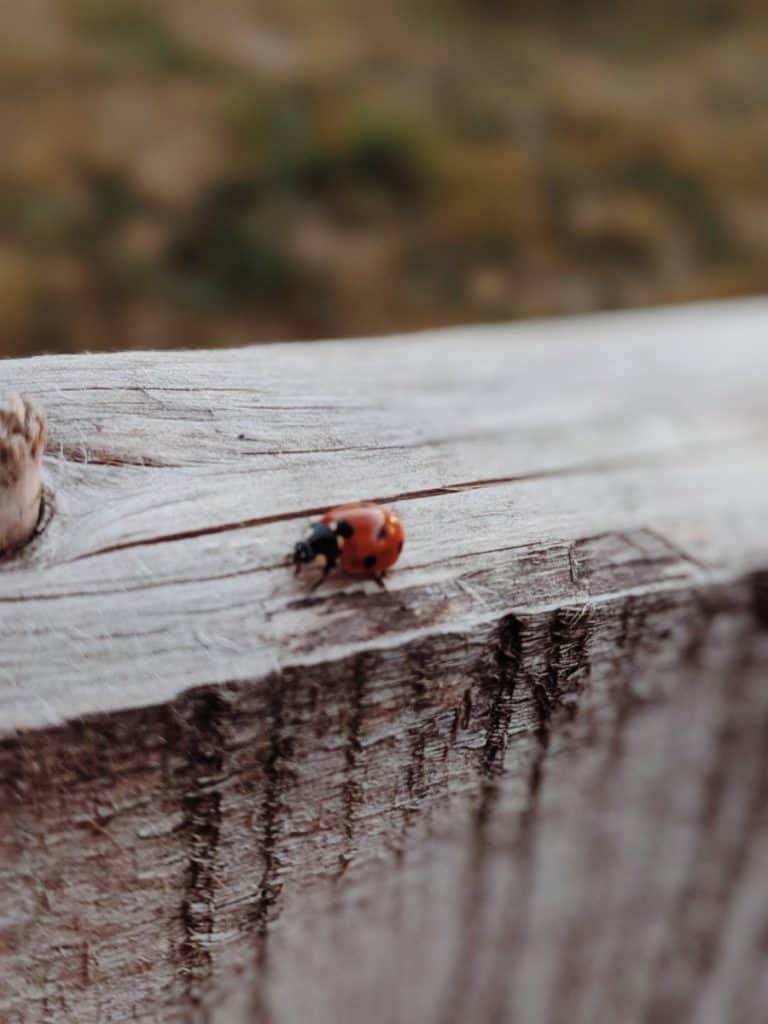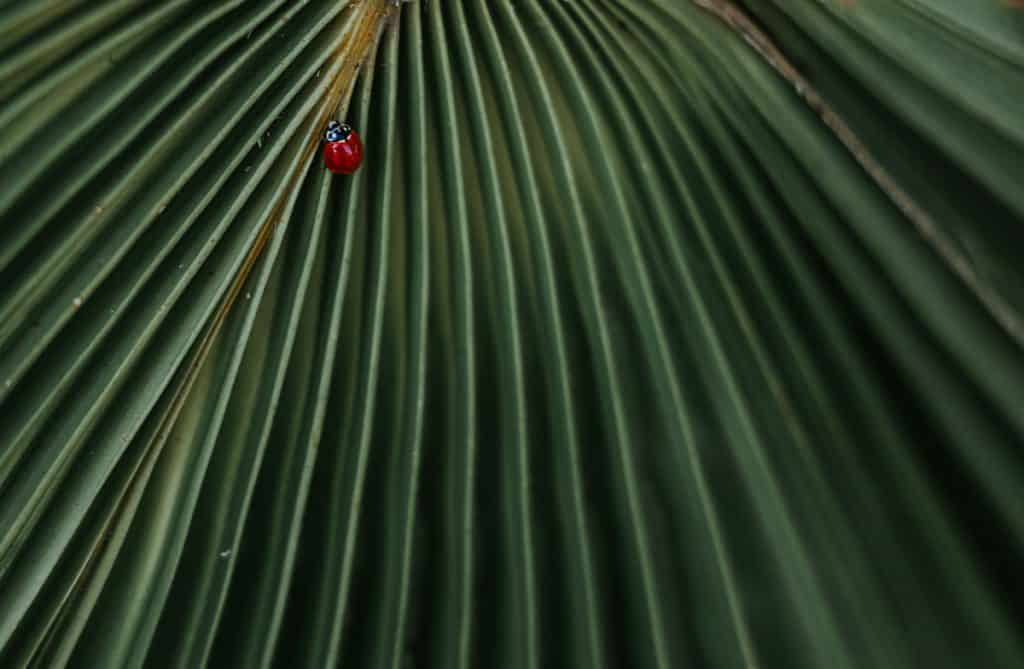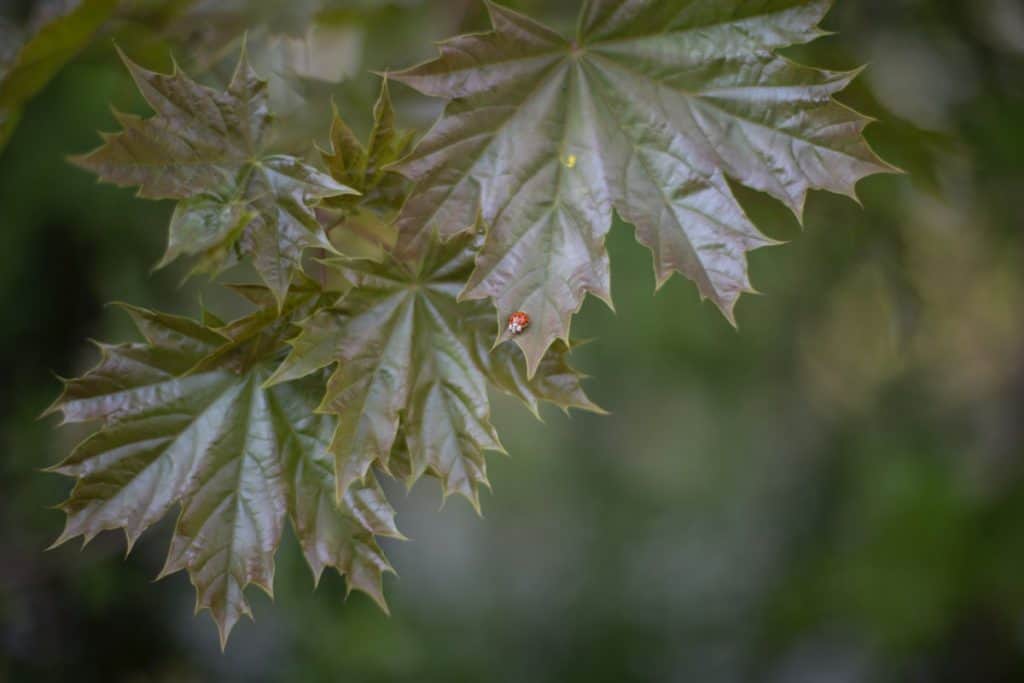
The ladybug has always been a symbol of happiness and life. They have gained popularity because of their vibrant color and cute appearance. Many states, such as Ohio, New York, Massachusetts, and Delaware, consider ladybugs as one of their official state symbols. These critters are considered to be a gardener’s best friend. As to where we can find these beautiful insects and if they nest in specific areas, the answer can be read further in this article.
If you enjoy reading this article, why not check out our articles on Insects’ Roles in Christianity & Judaism and How Strong Are Ants? Let’s Find Out!
Do ladybugs really build nests?
No, they don’t. They are very abundant in warm tropical climates where temperatures are almost always in their favor. If the ladybugs live in a region where winter is experienced, they overwinter and hibernate/diapause when temperatures reach below 55 °F (13 °C).
Are ladybugs beneficial?
Every year, farmers who are avid followers of organic farming choose to purchase ladybugs and release them in their garden or farm to help them deal with pests. Ladybugs are known to be one of the best natural pest control in the farming industry because their main meal includes crop-eating insects and pests. This shows that ladybugs have a beneficial role in our ecosystem. Let’s talk more about where and when we can usually spot ladybugs roaming or hibernating further in this article.
Speaking of bugs and gardens… did you know that bugs can be both very beneficial and very detrimental to your garden? Learn more about it in Everything You Need to Know About Bugs and Your Garden.

Home Is Where Their Meal Is
From what I have read and researched about ladybugs, they really don’t have a specific place where they live. As long as there is an abundant source of food for them and their offspring, you can bet your bottom dollar that ladybugs will be not far away. As for where they can’t live, they cannot live in cold climates. This means that any area where an arctic environment can be experienced is a no-no to ladybugs.

Why are there so many ladybugs in your house?
Usually, a ladybug will stay in one spot as long as there is plenty of food source. But as soon as their food source becomes non-existent, they will spread their wings and look for a different location. Ladybugs are excellent fliers, having the ability to fly at an altitude of 3,600ft and a distance of 74 miles in one flight. They can scout for food sources in a wide range, indeed.
What attracts ladybugs?
If you are looking to attract the ladybugs in your garden, then you might want to start by planting a few flowering plants that ladybugs like. Some examples are Angelica, Calendula, Chives, Dill, Fennel, and Marigold. Now, that is the first step, making the ladybugs stay in your garden will involve providing them with their favorite meal (aphids). Planting a decoy plant that you will let aphids thrive will help in keeping ladybugs in your garden. Look into planting some Nasturtium in your garden as your decoy plant because this is an aphid’s favorite. Cabbage will also do, marigold and radish.
You can read more about how much ladybugs love aphids in What Do Ladybugs Eat?
No Nest But They Overwinter
Ladybugs can be often seen during spring and fall. These seasons are when they are the most active. But when the weather turns cold, they do need to look for a warm place where they can hole up and overwinter. Under foliage, rotten logs, cracks, and crevices, beneath tree bark, under rocks, and sometimes inside homes.
What happens to ladybugs during winter?
What happens to a ladybug during overwintering is that they would find a secluded place away from the harsh cold weather and they would clump together to keep themselves warm. You need to know that ladybugs are cold-blooded insects, which is why they are very susceptible to cold weather. As soon as the ladybugs feel the onset of cold weather, they start to look for a place where they can overwinter. The chilly climate also makes food sources challenging to find as aphids and other insects that ladybugs dine on don’t thrive during the cold months.

Ladybug sent signals to others:
In previous articles, we’ve talked about how ladybugs secrete a foul-smelling liquid to deter predators from eating them. It is believed that the same foul-smelling liquid is used by the ladybugs to mark a suitable spot where they can overwinter. Now, other ladybugs will follow this scent and pretty soon a swarm of hundreds, and sometimes thousands of ladybugs can be seen overwintering in one spot.
Body reaction of ladybugs during winter:
As these ladybugs overwinter, their bodily functions decrease, and they live off from the stored fats their body has. They prefer to overwinter in areas where there is some form of humidity to keep them hydrated. A dry environment like the one we have inside our home during winter can dehydrate these critters causing death in the end. So you really don’t need to worry if you find a few ladybugs overwintering inside your home. And as the temperature turns colder, the ladybugs also decrease their activity and somewhat hibernate until winter ends. It is said that ladybugs decrease their bodily function to as low as 10% when they overwinter.
Do ladybugs hibernate during the winter season?
Now, you might have read that ladybugs do hibernate during the winter, but did you know that there is another form of a non-activity stage that a ladybug goes through? It is called diapause. The difference between hibernation and diapause is that the term hibernation is solely used for when animals and insects go into a deep sleep during winter.
Meaning, hibernation is a term used during winter. Diapause, on the other hand, can happen during winter and summer. It is most often observed in fish, birds, and insects.
Another difference between hibernation and diapause is that hibernation is a way for animals to escape the harsh winter climate while diapause is a stage where the species’ development is halted or suspended to ensure survival through unfavorable weather conditions.
A Year In The Life Of A Ladybug
Colder Months: October To February
We’ve established that ladybugs can be seen almost anywhere as long as the temperatures are warm enough. But when the cold months’ approach, expect to see less and less ladybugs roaming around your garden. We’ve mentioned in the previous section of this article that ladybugs start looking for a place to hibernate or diapause as soon as the onset of the cold months starts. By the end of November, you’ll find little to no ladybugs around as this is the time when temperatures get cold enough to prevent ladybugs from flying.
During winter months, ladybugs hibernate in warm, humid places. They can enter your home and hibernate there too, but since humidity is low inside our homes due to constant heating, ladybugs risk getting dehydrated.
The perfect place for a ladybug to overwinter or hibernate is inside a rotten tree or under thick dried leaves where hundreds or thousands of them clump together to form a swarm that will conserve heat and allows them to survive the winter.
Ladybugs will not be able to fly when temperatures reach below 55 °F (13 °C). This prevents them from locating food sources effectively. Another reason why ladybugs overwinter is that their leading food (aphids) is not around during the winter months too. So rather than burning off energy, ladybugs prefer to wait out the winter months and emerge when the temps start to warm up again.
Warmer Months: March to April
As soon as the temperature warms into 60 °F (15 °C), the ladybugs begin to come out of their hiding place and hunt for food and water source. Depending on where they overwintered, the ladybugs who have less moisture in their hibernating spot will first look for a water source to rehydrate themselves before proceeding to locate a food source. But if the ladybugs had a humid hibernating spot then their first course of action after emerging is to locate food.
Expect to find ladybugs flying and zipping around your garden during these months. Some would also be sitting still trying to warm their bodies up and preparing to fly and find water and food source. These months are when they are the most active as they are gorging themselves with food to recover from their hibernation.
Mating Month: May
By this time, the ladybugs have recovered enough from their hibernation and are now ready to look for a mate. This is also the time when the newly hatched ladybugs from the start of spring begin to emerge as an adult.
This is considered to be the best month to mate; however, mating also happens throughout summer. May is just the peak season because the new adult ladybugs are joining the fray during this time.
Females are slightly larger than the male species when it comes to ladybugs. They can store the male’s sperm for about 2 to 3 months before they start laying eggs. As with other insect species, each ladybug has a signature pheromone that they produce.
This pheromone is specially concocted to attract their mate. Once they find their mate, the male (who is smaller) will mount the female from behind, gripping the female with its legs and holding on tight. The mating can last up to two hours at a time, and the male stays attached to the female during the whole time. Whew! Talk about endurance!
It is hard to determine if a ladybug is a male or a female unless you spot them during copulation. You can easily say that the one on top is the male (duh), and the one on the bottom is the female. Unless you put these creatures under the microscope, it is hard to tell a male from a female just by looking at them
Time For Some Eggs: June to August
Remember that I told you the female could hold the male’s sperm for 2 to 3 months? Well, this is the time when females begin to lay eggs. Female ladybugs will locate a leaf where there is plenty of food for their offspring and put a cluster of 10 to 15 eggs underneath that leaf. The ladybug will also lay unfertilized eggs that will serve as an instant snack for their offspring when they hatch.
Ladybug eggs look like yellow to orange jelly beans attached to the underside of a leaf. They are clumped in a cluster and will remain eggs for about 4 to 10 days, depending on the temperature before they hatch.
Beefing Up: September
When September comes, the ladybugs knows that the cold season is fast approaching. They will then start to gorge themselves with more food beefing up their fat reserve so that they have enough to survive the winter when they hibernate. This is also the time when they start looking for possible places to hibernate. So expect to see them on leaves where the food source is plenty and expect them to fly around looking for more food sources.
Conclusion
To give you a birdseye view of the whole article, ladybugs don’t build nests at all. They look for a place where they can overwinter and form a swarm that would help them stay warm. They are not specifically located in one area only.
Their main requirement to stay is that they have plenty of food and water source nearby. As long as the temperature does not reach below 55 °F (13 °C), you will see ladybugs zipping around your garden. Also, don’t expect to see them during the winter months. They are cold-blooded insects, so they are very sensitive when the temperature drops. They are active during spring, summer, and fall and hibernate during winter. This article also gave you a blow by blow account on what the ladybugs are up to during specific months. So if you have ladybugs on your premises or your garden, know that they are there to help you out and not annoy you. They are great at controlling plant-eating pests, and they are cute and fun to watch. Just enjoy them while they are around.
If you enjoyed reading this article, why not check out our articles on What is the Largest Insect Swarm? and What Are Scorpions Attracted to? Let’s Find Out!
Recent Posts
Tiny Black Bugs in Bathroom NO WINGS: What They Are and What to Do!
Finding tiny black bugs in your bathroom can be uncomfortable, to say the least. Especially if they are persistent, or they appear in very large numbers, which they often like to do. When it...
Tiny Black Bugs in Plant Soil - What Are They & What To Do About It
A short horror story: You get a new houseplant. You do your best to take care of it. You’ve ensured that it has the right soil, the right amount of sun, it gets enough water. And then one day, you...

